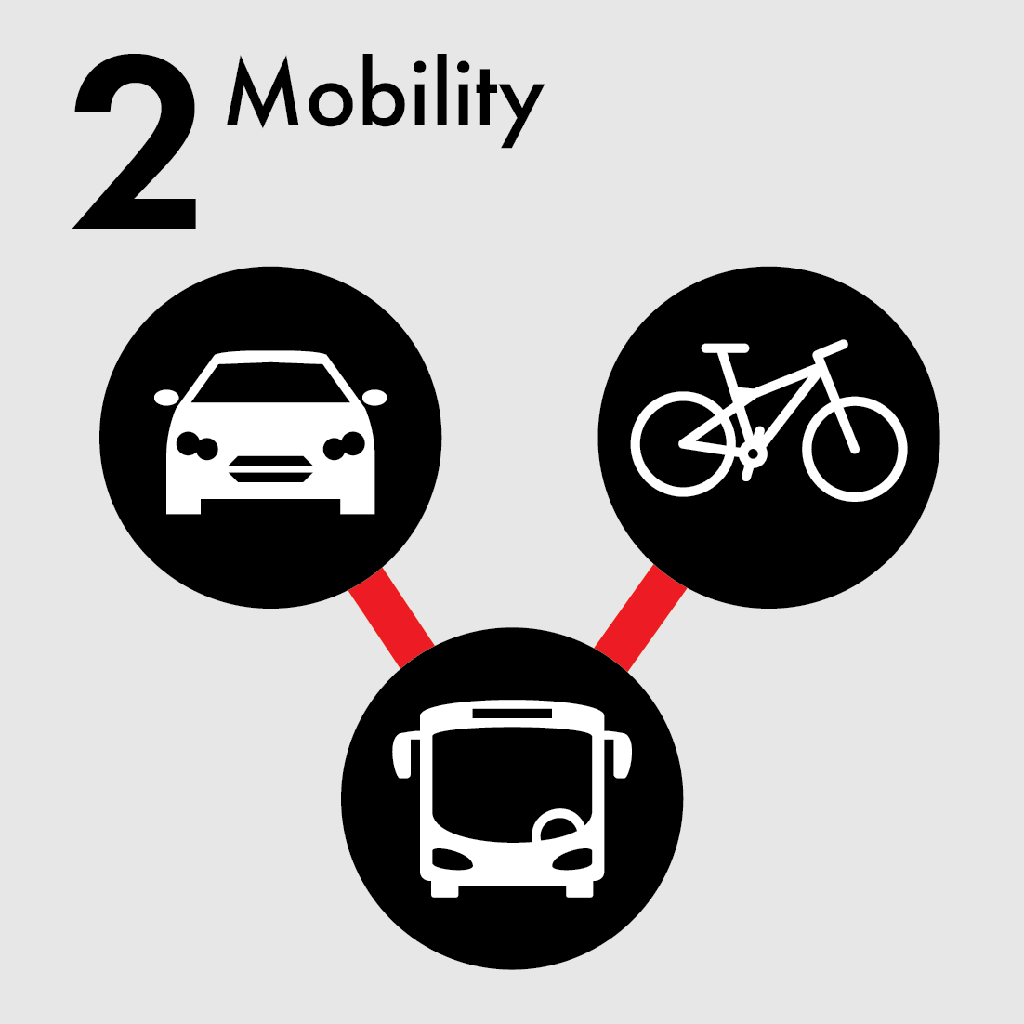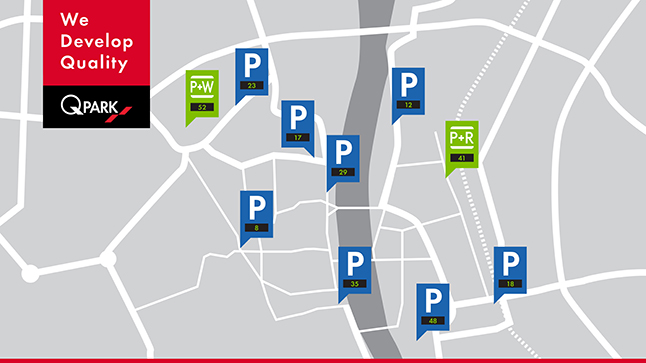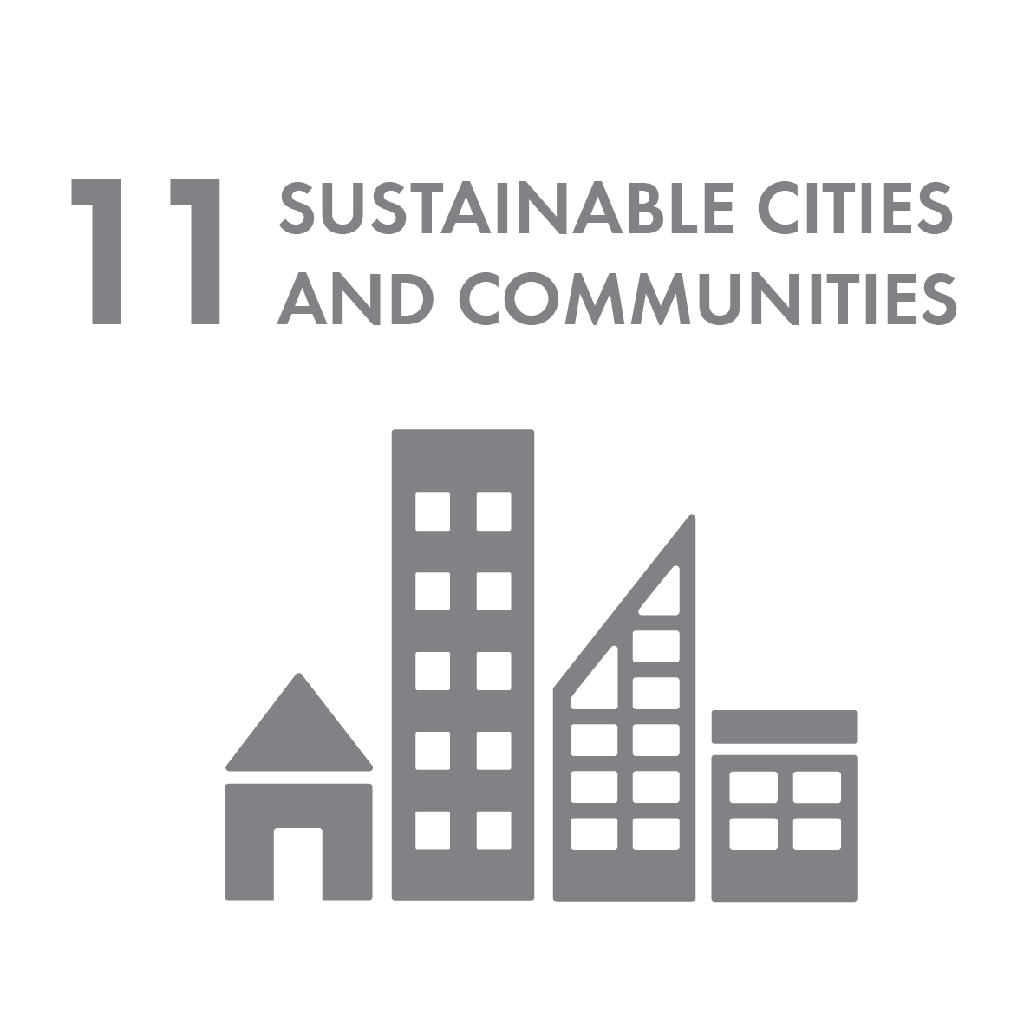Accessibility

We create value for our stakeholders by helping to maintain mobility for all.
In our 2020 Materiality Analysis, this is considered the second most material topic.
City centres
Parking facilities have a positive impact on the quality of life in urban areas and in large cities in particular. After all, a city is more attractive if it is easily accessible while having fewer cars parked on streets and on town squares. With our parking facilities and services, we contribute to the accessibility of vital functions.
We work together with municipalities to tune fair parking tariffs for different facilities and distances, such as parking on-street or in parking facilities, and in the city centre or at the outskirts.
By engaging municipalities in dialogue on these matters, we want to share our expertise to make a contribution to the accessibility and sustainability of cities. We actively seek collaboration with local governments so that regulated and paid parking become an integral part of urban mobility.
Figure 16 Access with P+R and P+W solutions

Even though municipalities throughout Europe are increasingly imposing restrictions on city centre access by cars, some access is required to be inclusive to all sections of society.
Some visitors prefer to travel as close as possible to their final destination by car and are willing to pay for that service, others opt for a journey including Park+Ride or Park+Walk.
Inner-ring purpose-built parking facilities in particular enhance accessibility while maintaining mobility. They reduce inner-city search traffic and on-street parking which, in turn, improves the liveability for residents and visitors alike.
With purpose-built parking facilities at varying distances from the city centre and with varying parking tariff schemes, Q-Park contributes to:
accessibility to amenities such as public transport, hospitals, shops and events;
decreasing traffic searching for a place to park;
freeing up public space for urban parks and town squares;
creating opportunities to reduce on-street parking;
nudging motorists to make informed choices;
creating sustainable parking solutions;
decreasing subsidised parking, by pursuing the 'user pays' principle.
Results
We operate in seven Western European countries: Netherlands, Germany, Belgium, UK, France, Ireland and Denmark.
We have a top three market leader position in six of these countries: Netherlands, Germany, Belgium, France, Ireland and Denmark.
We are present in about 330 cities.
We manage a total of:
3,076 parking facilities;
571,166 parking spaces.
Hospitals
At Q-Park, we partner with hospitals and healthcare facilities whenever we can. This allows the hospital to focus on its core business of healthcare while we can focus on the parking.
Good parking facilities help hospitals run smoothly. Patients arrive on time and are less stressed for their appointments. For hospital staff, good parking facilities provide a convenient end to their journey which means they will start their shift in a positive frame of mind.
Some may argue that parking at hospitals should be free, but regulated and paid parking is the best method for an efficient healthcare centre to meet the parking needs of staff, patients and visitors with the limited space and resources available.
At Q-Park we know that parking is never free. There are often transport alternatives to using a car and especially in a healthcare setting, for those who can, we recommend encouraging visitors to use active transport such as walking or cycling.
This relieves pressure on the limited parking capacity available and ensures that there is always a parking space for those who really need to travel by car.
When we partner with a hospital, we first diagnose parking needs. We help the hospital gain insight into the types of treatments they provide, the preferred means of transport and parking movements per target group (staff, patients and visitors) to determine:
the parking capacity required;
a bespoke tariff structure;
specific parking products;
a nudging mobility menu per target group.
This helps a hospital understand the needs of their parking customers. When Q-Park operates a hospital car park, we will ensure our signature features are present. For hospitals these include:
extra spaces for blue badge holders;
wide parking bays, preferably angled for easy access;
specially trained Parking Hosts, committed to providing friendly and respectful service in line with that of the hospital’s own policy and procedures;
separate parking areas for staff and visitors.
Figure 16 Diagnosing parking needs for hospitals

Results
Chart 9 PFs at or within 300 m of a hospital
Why free parking at hospitals is not a great idea.
Click for nine specialist tips on hospital parking.
Mobility inclusion
Municipalities are committed to providing access to public transport and amenities for all citizens, including persons with reduced mobility (PRMs).
More than 80 million people in the EU, about 16%, live with a disability of some kind, often affecting their mobility. Considering the inevitable reversal of the population pyramid and that more than one-third of people aged over 75 have an age-related condition that restricts their mobility to a certain extent, providing easy access to public amenities is vital.
Q-Park ensures that its parking facilities meet government requirements for inclusive mobility with features including:
wide walkways that provide ample space for wheelchair users and people using walking aids;
spaces for disabled motorists are always located close to the pedestrian exit;
threshold-free access from the pedestrian area to the parking deck;
wide doorways;
ramps with gentle incline and lifts suitable for wheelchairs and buggies;
safe handrails and protection under tapering constructions;
easy to read signage with colour contrast;
more than sufficient lighting levels.
The availability of inner-city parking close to points of interests (POIs) is an essential service to enable PRMs to participate fully in society.
Results
In our parking facilities we have allocated multiple spaces for motorists with special needs, whether they are parents with young children and buggies or passengers with reduced mobility.
In 2020, we again allocated more parking spaces in our owned and long-leased (O+LL) parking facilities (PFs) to people with reduced mobility and most of these PFs have lifts.
Chart 9 O+LL PFs providing access for PRMs
With additional parking facilities providing spaces dedicated to people with reduced mobility, in 2020 we now have almost 3,000 spaces for this special group.
Chart 10 Number of parking spaces dedicated to PRMs


With our measures to promote accessibility we contribute to SDGs 9 and 11.
